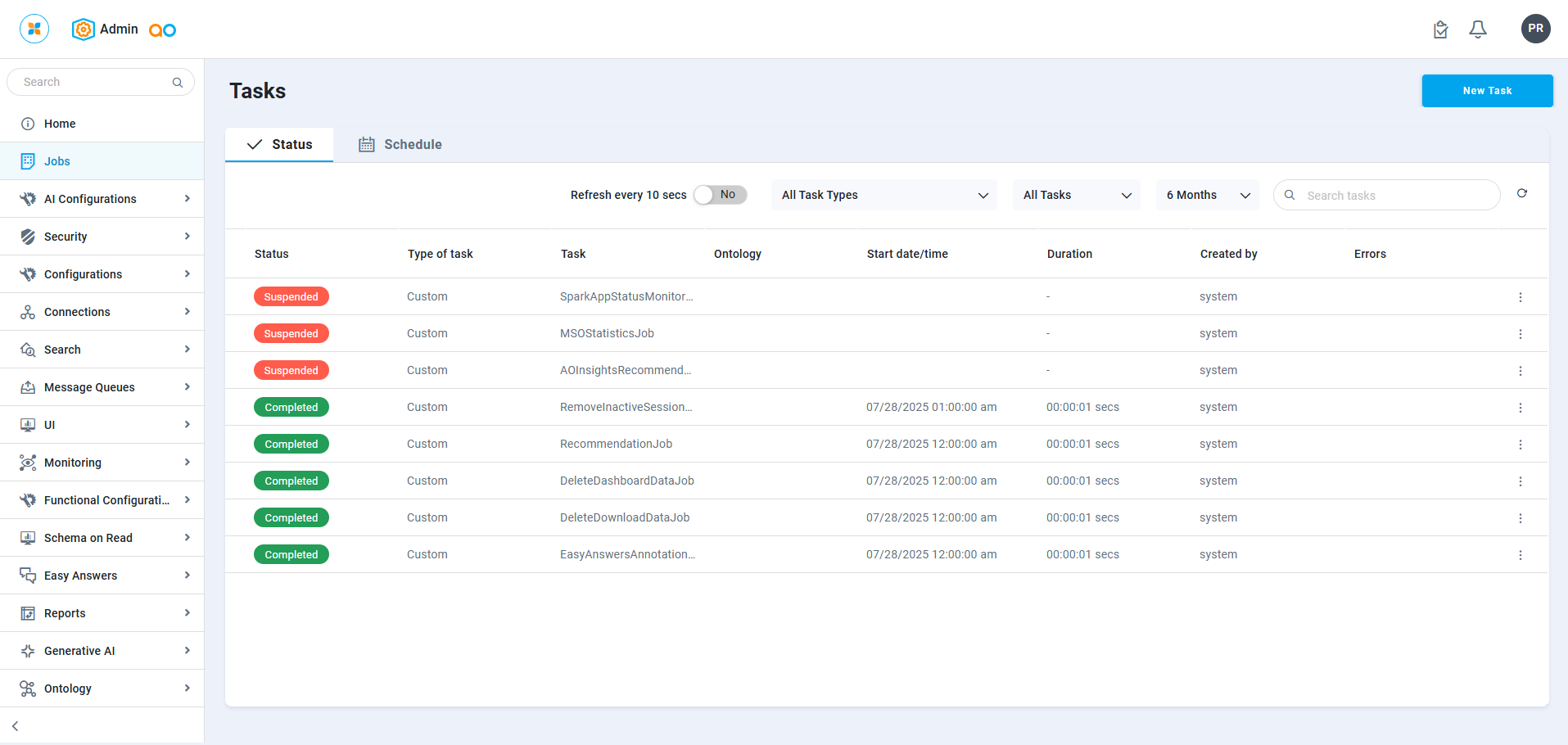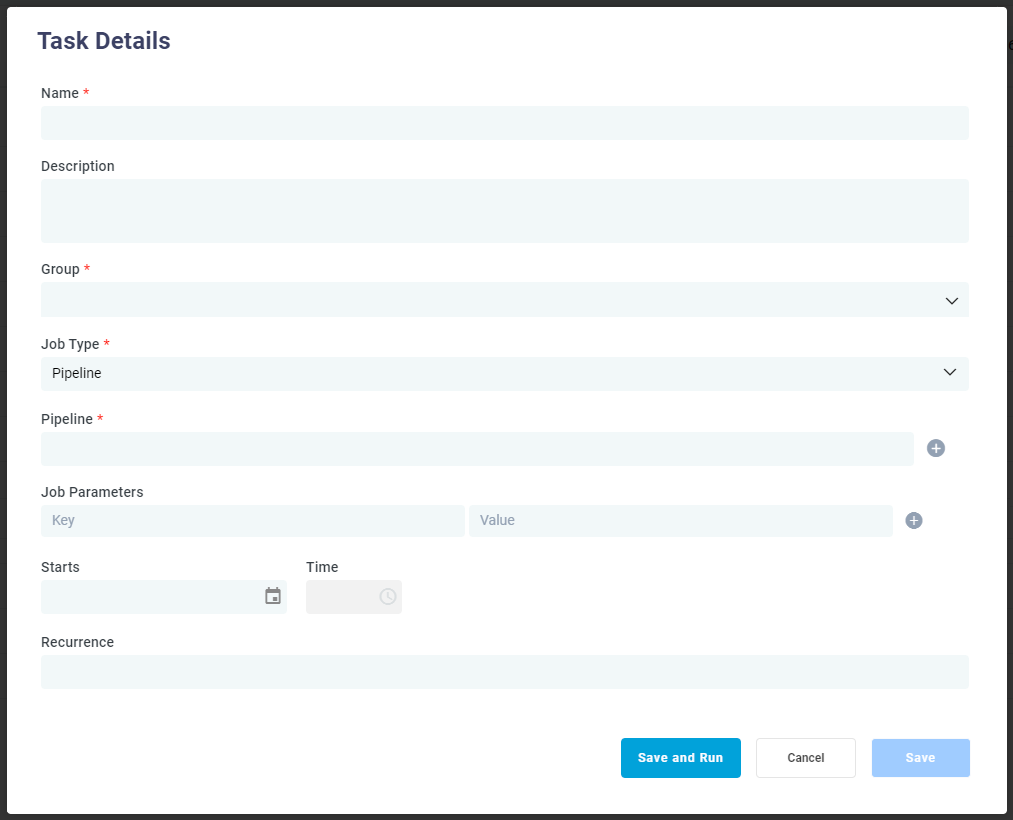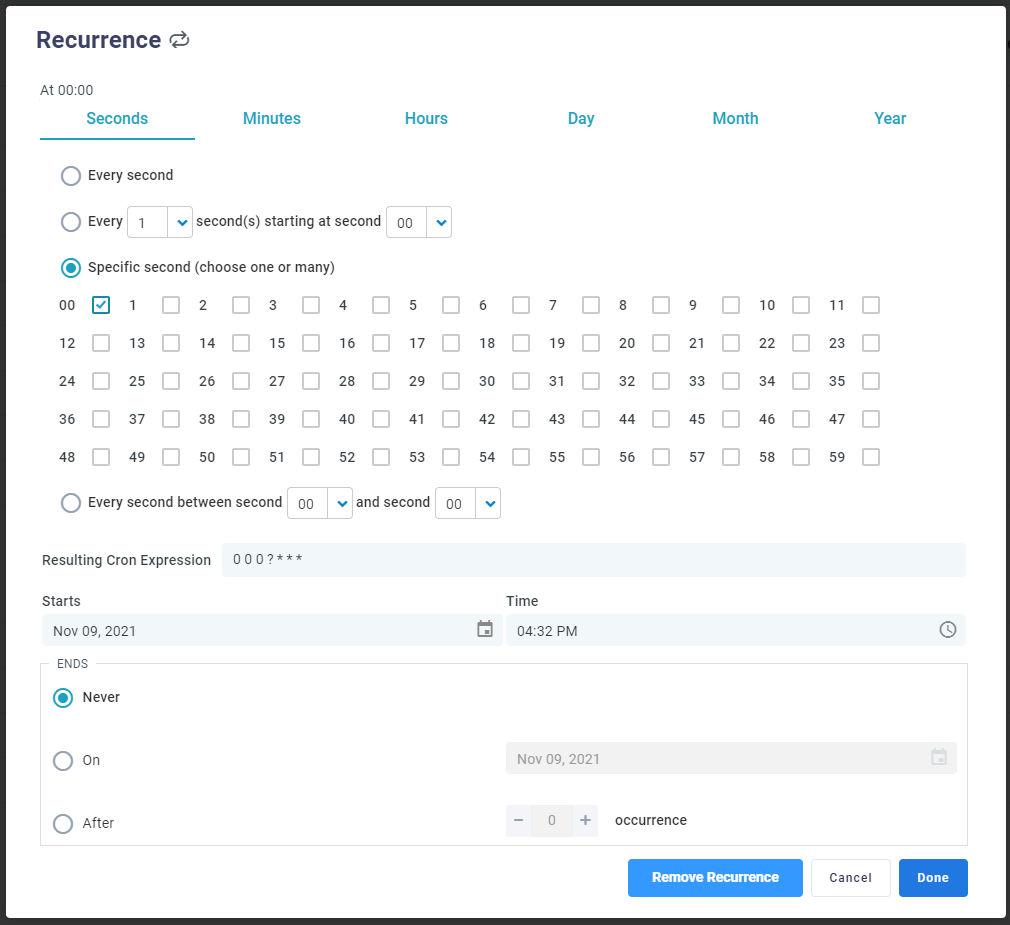Admin > Jobs
Intended audience: DEVELOPERS ADMINISTRATORS
AO Platform: 4.3
Overview
The Jobs page allows the user to create/edit Tasks that will execute based on a configured schedule (once scheduled, the Task becomes a Job). The most common Task type is a Pipeline, ie a process where data is read (from a data source), often transformed/enriched, and then loaded into another staging storage system (using a data sink) for use by the application components in a solution. Another common Task type is a clean-up task. This can be based on some retention policies that require some data to be deleted due to privacy or security requirements in general, - or just for general housekeeping/health of the system.
Some Tasks only require to execute once, others are scheduled with a recurrence to run every day (or night).
The Jobs page has two tabs:
Status
Schedule
Create a new task by clicking the New Task button. A Task becomes a Job when it’s been given a schedule of execution.
Status tab
On this tab the user can view all available Jobs in the AO Platform.
Options for the list of Tasks
New Task - click to open the Task Details dialog to create a new Task. See Creating a New Task below.
Auto-Refresh Interval - toggle to enable/disable an auto-refresh of the Task list. The default is every 10 seconds if enabled.
Task Types - select from the dropdown the Task Type to view, including All Task Types, System, Data Load, Spark Data Load, Document Extraction, Usage Analytics, Cache, Appstore, Custom, QnA Test, Insight, Ontology Discovery, Dashboard Export, Quick Insights, Export Data, Validator, Content Repository, Solution, and Ontology Materialized View.
Task Status - select from the dropdown the Task Status to view, including All Tasks, In Progress, COMPLETED, Failed, SUSPENDED , and Canceled Tasks.
Time Range - select from the dropdown the period to view Tasks from, including Current Week, Last Week, 2 Weeks, Current Month, Last Month, 3 Months, and 6 Months.
Search - enter a general Search term for finding specific Tasks.
Refresh - refreshes the list of Tasks.
Options for individual Tasks
Open - to view additional details about the Job
History - shows a list of results from previous Job executions. The History list can be exported to a CSV file
Retry - this option appears if the execution of a Job fails

Schedule tab
On this tab, the user can see the Next Execution time as well as take the following actions:
Edit - allows the user to edit the configuration details of the Task
Run - executes the Job immediately
History - shows a list of results from previous Job executions. The History list can be exported to a CSV file. Additionally, the log files for executed Jobs can be viewed from the History window
Disable/Enable - disables/enables the Job. When Job is disabled, Status will show as SUSPENDED on the Status tab
Delete - deletes the Job
Creating a New Task
The screenshots below show the New Task creation pop-up dialogs. The mandatory properties are marked with *
There are two Job Types:
Pipeline - select from a popup list of existing Pipelines to have them execute at a specific time. This is typically done for data preparation tasks, such as loading a data source into memory or creating a new file/database (sink) from one or more transformed/enriched data sources
Custom - this type is only used for certain advanced Jobs and requires a Class Name as input
Input parameters for the Job can be provided as one or more Key/Value pairs
A Job can either be set to run once (without recurrence) or a recurrence can be provided - see second screenshot


